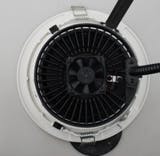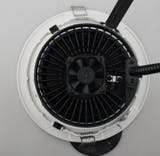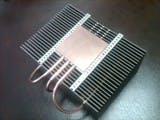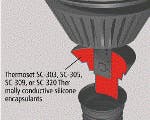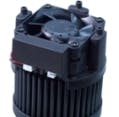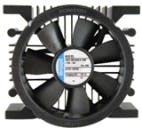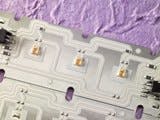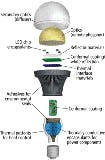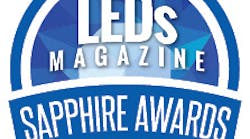This article was published in the March 2013 issue of LEDs Magazine.
View the Table of Contents and download the PDF file of the complete March 2013 issue, or view the E-zine version in your browser.
+++++
Heat remains the enemy of reliable solid-state lighting (SSL) products. Cooling LEDs is necessary to not just enable long life, but to also ensure that SSL lamps and luminaires provide stable lumen output and color over the life of the product. Thermal management in an SSL product can encompass many elements starting with basic heat sinks but also including thermal materials, thermally-efficient circuit boards, active coolers, and other technologies, materials, and products. To get a broad view of the many approaches to thermal design, we surveyed the thermal-related products showcased in the recent Strategies in Light (SIL) conference exhibits.
silicone encapsulants The materials story continues into formulations designed to encapsulate components in an SSL product design. Encapsulation can result in more reliable products, especially in areas such as the LED driver electronics. But those electronics also generate heat that must be dissipated along with the heat from the nearby LEDs. Lord manufactures a number of thermal gels, adhesives, and encapsulants than can be used in SSL product design. The nearby illustration shows the driver electronics encapsulated in Thermoset thermally conductive silicone encapsulant.
Nuventix active air-jet LED cooler
Fans aren’t the only approach to moving air to increase the effectiveness of a heat single or enable the use of a smaller heat sink. Nuventix's Synjet technology relies on an oscillating diaphragm to create jets of air. The company says the technology is more reliable and quieter than traditional fans, and that it is more effective at removing heat due to the velocity vectors of the jet flow. At SIL, Nuventix announced the R150-170 series of products (pictured) that are specifically designed for high-bay lighting applications with the ability to cool light engines producing 20,000 lm.
There were also a few other thermal-related exhibits at SIL that should be mentioned. The Bergquist Company exhibited thermal materials, thermal PCB substrates, and fans and blowers. One of the company's key technologies is called T-Clad designed specifically for surface-mount devices such as LEDs mounted on PCBs. Cofan USA demonstrated heat sinks for specific types of retrofit lamps. Dupont Electronics offers CooLam PCB technology for popular LEDs. Laird also exhibited thermal PCB substrates.
The message for SSL product designers is look at every aspect of a new design as an opportunity to enhance the thermal performance of the design and therefore the reliability of the new product. Moreover, the designers must expand the scope of technologies considered for use in a project with new materials and approaches coming to market constantly. Indeed the best products will result from the melding of thermal, mechanical, and optical design disciplines and the selection of products and technologies that serve the specific requirements of the application at hand.
